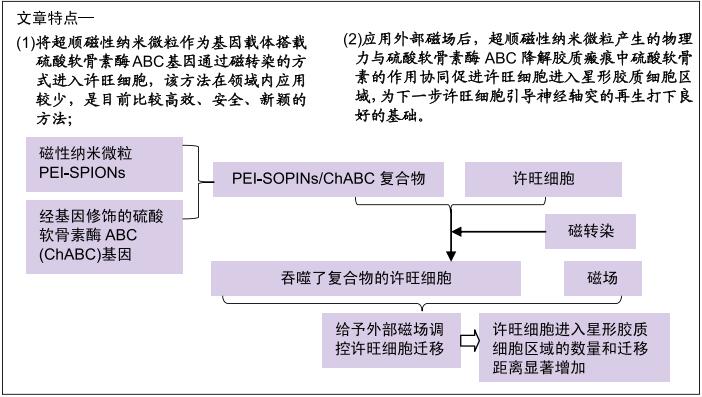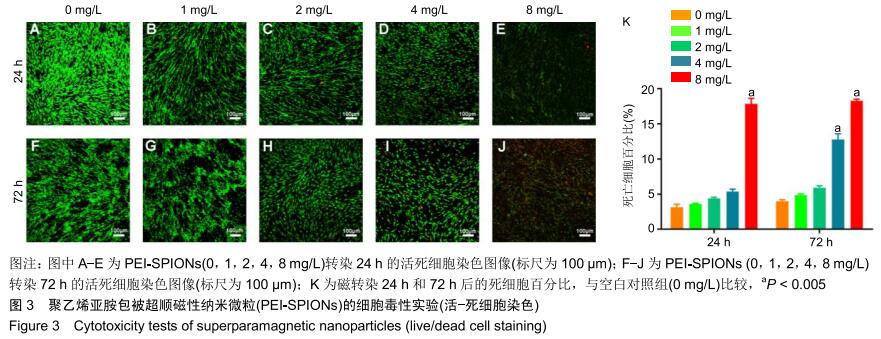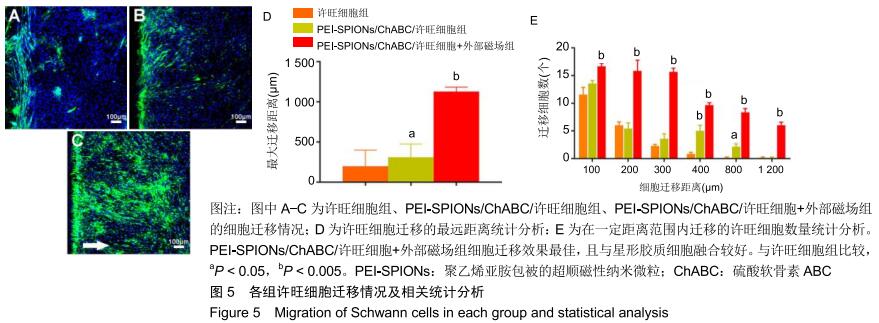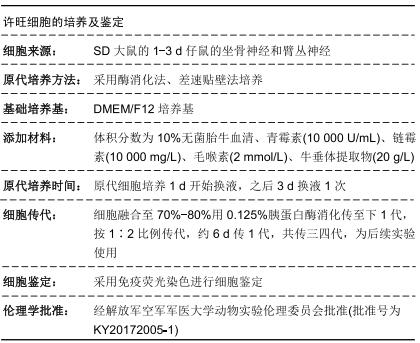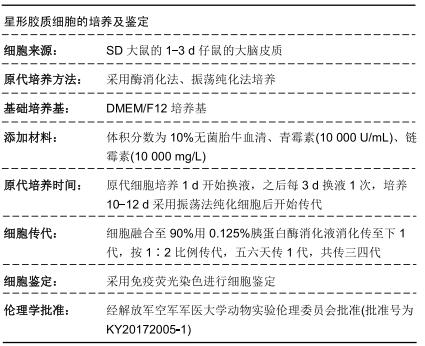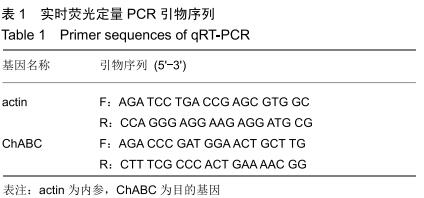|
[1] 李佳音,韩素芳,肖志峰,等.脊髓损伤再生修复的临床研究进展[J].中国科学:生命科学,2019,49(6):673-682.
[2] 张勇,马迅,孙麟,等.人脐带间充质干细胞来源外泌体减轻大鼠脊髓星形胶质细胞氧糖剥夺/复氧损伤所致的水肿[J].中国组织工程研究, 2019,23(25):4011-4017.
[3] 陈锴,蔡梦溪,晏梓钧,等.小胶质细胞M1/M2极化状态在脊髓损伤中作用的研究进展[J].脊柱外科杂志,2019,17(3):216-219.
[4] HUANG L, XIA B, LIU Z, et al. Superparamagnetic Iron Oxide Nanoparticle-Mediated Forces Enhance the Migration of Schwann Cells Across the Astrocyte-Schwann Cell Boundary In vitro. Front Cell Neurosci. 2017;11:83.
[5] BRÜGGER V, DUMAN M, BOCHUD M, et al. Delaying histone deacetylase response to injury accelerates conversion into repair Schwann cells and nerve regeneration. Nat Commun. 2017;8: 14272.
[6] 谭程方,黄思琴,唐成林,等.电针联合雪旺氏细胞移植对脊髓压迫性损伤后脊髓内CD4、CD8表达及髓鞘修复的影响[J].针刺研究,2019, 44(6): 391-398.
[7] KANNO H, PEARSE DD, OZAWA H, et al. Schwann cell transplantation for spinal cord injury repair: its significant therapeutic potential and prospectus. Rev Neurosci. 2015;26(2): 121-128.
[8] 向高,刘开鑫,巩朝阳,等. Ski在脊髓损伤后胶质瘢痕形成中的作用及机制研究进展[J].中国康复理论与实践, 2019,25(6):630-633.
[9] 巩朝阳,刘开鑫,向高,等.脊髓损伤后胶质瘢痕形成的研究进展[J].中国康复理论与实践, 2018, 24(6):641-644.
[10] O'NEILL P, LINDSAY SL, PANTIRU A, et al. Sulfatase-mediated manipulation of the astrocyte-Schwann cell interface. Glia. 2017; 65(1):19-33.
[11] 孙嘉锴,张家玮,李鲲,等. 810nm弱激光作用下巨噬细胞对星形胶质细胞的影响[J].中国脊柱脊髓杂志,2019,29(2):156-163.
[12] CHEN M, ZHENG B. Axon plasticity in the mammalian central nervous system after injury. Trends Neurosci. 2014;37(10): 583-593.
[13] TAKEUCHI K, YOSHIOKA N, HIGA ONAGA S, et al. Chondroitin sulphate N-acetylgalactosaminyl-transferase-1 inhibits recovery from neural injury. Nat Commun. 2013;4:2740.
[14] ZHAO RR, MUIR EM, ALVES JN, et al. Lentiviral vectors express chondroitinase ABC in cortical projections and promote sprouting of injured corticospinal axons. J Neurosci Methods. 2011;201(1): 228-238.
[15] KOH CH, PRONIN S, HUGHES M. Chondroitinase ABC for neurological recovery after acute brain injury: systematic review and meta-analyses of preclinical studies. Brain Inj. 2018;32(6): 715-729.
[16] ZHANG X, WU F, MEN K, et al. Modified Fe3O4 Magnetic Nanoparticle Delivery of CpG Inhibits Tumor Growth and Spontaneous Pulmonary Metastases to Enhance Immunotherapy. Nanoscale Res Lett. 2018;13(1):240.
[17] ZHAO X, CUI H, CHEN W, et al. Morphology, structure and function characterization of PEI modified magnetic nanoparticles gene delivery system. PLoS One. 2014;9(6):e98919.
[18] XIA B, HUANG L, ZHU L, et al. Manipulation of Schwann cell migration across the astrocyte boundary by polysialyltransferase- loaded superparamagnetic nanoparticles under magnetic field. Int J Nanomedicine. 2016;11:6727-6741.
[19] KRÖTZ F, DE WIT C, SOHN HY, et al. Magnetofection--a highly efficient tool for antisense oligonucleotide delivery in vitro and in vivo. Mol Ther. 2003;7(5 Pt 1):700-710.
[20] MYKHAYLYK O, SOBISCH T, ALMSTÄTTER I, et al. Silica-iron oxide magnetic nanoparticles modified for gene delivery: a search for optimum and quantitative criteria. Pharm Res.2012;29(5): 1344-1365.
[21] 革军,刘鐘阳,朱澍,等.人脐带干细胞来源的外泌体促进体外培养雪旺细胞迁移的研究[J].现代生物医学进展, 2019,19(3):439-444.
[22] 许德超,方丽丽,陈辉,等.红景天苷对缺氧复氧星形胶质细胞细胞损伤的影响[J].中国免疫学杂志,2019,35(11):1325-1330.
[23] SADAT ME, PATEL R, SOOKOOR J, et al. Effect of spatial confinement on magnetic hyperthermia via dipolar interactions in Fe3O4 nanoparticles for biomedical applications. Mater Sci Eng C Mater Biol Appl. 2014;42:52-63.
[24] 李黎,马力.FeO磁性微粒的制备及表征[J].中国组织工程研究,2011, 15(34):6385-6387.
[25] PRABHA G, RAJ V. Preparation and characterization of chitosan-Polyethylene glycol-polyvinylpyrrolidone-coated superparamagnetic iron oxide nanoparticles as carrier system: Drug loading and in vitro drug release study. J Biomed Mater Res B Appl Biomater. 2016;104(4):808-816.
[26] CICHA I, SCHEFFLER L, EBENAU A, et al. Mitoxantrone-loaded superparamagnetic iron oxide nanoparticles as drug carriers for cancer therapy: Uptake and toxicity in primary human tubular epithelial cells. Nanotoxicology. 2016;10(5):557-566.
[27] OKADA S, HARA M, KOBAYAKAWA K, et al. Astrocyte reactivity and astrogliosis after spinal cord injury. Neurosci Res. 2018;126: 39-43.
[28] WANG J, XIANG B, DENG J, et al. Externally Applied Static Magnetic Field Enhances Cardiac Retention and Functional Benefit of Magnetically Iron-Labeled Adipose-Derived Stem Cells in Infarcted Hearts. Stem Cells Transl Med. 2016;5(10):1380-1393.
[29] MUTHANA M, SCOTT SD, FARROW N, et al. A novel magnetic approach to enhance the efficacy of cell-based gene therapies. Gene Ther. 2008;15(12):902-910.
[30] POITELON Y, NUNES GD, FELTRI ML. Myelinating cells can feel disturbances in the force. Oncotarget. 2017;8(4):5680-5681.
[31] SUN Z, GUO SS, FÄSSLER R. Integrin-mediated mechanotransduction. J Cell Biol. 2016;215(4):445-456.
[32] WANG L, LUO JY, LI B, et al. Integrin-YAP/TAZ-JNK cascade mediates atheroprotective effect of unidirectional shear flow. Nature. 2016;540(7634):579-582.
[33] AFSHARI FT, KWOK JC, WHITE L, et al. Schwann cell migration is integrin-dependent and inhibited by astrocyte-produced aggrecan. Glia. 2010;58(7):857-869.
|
